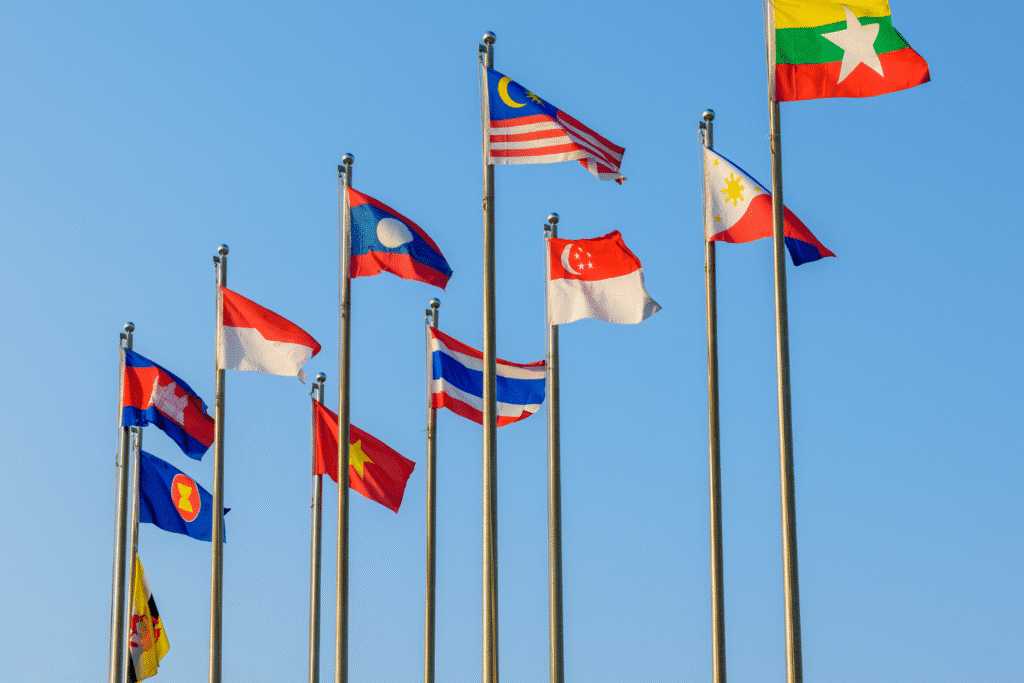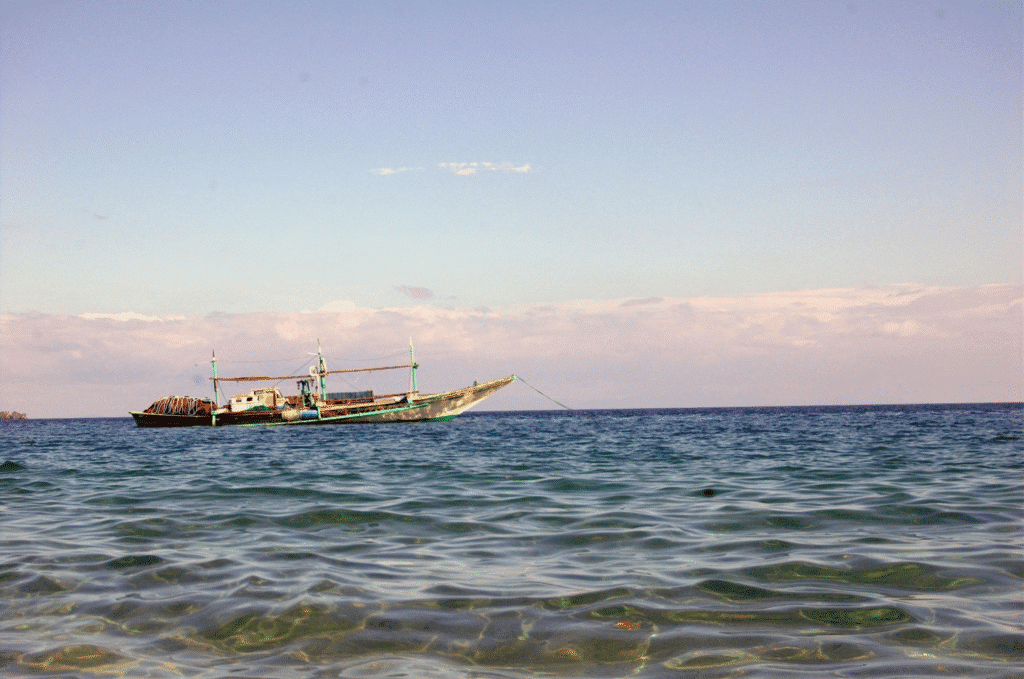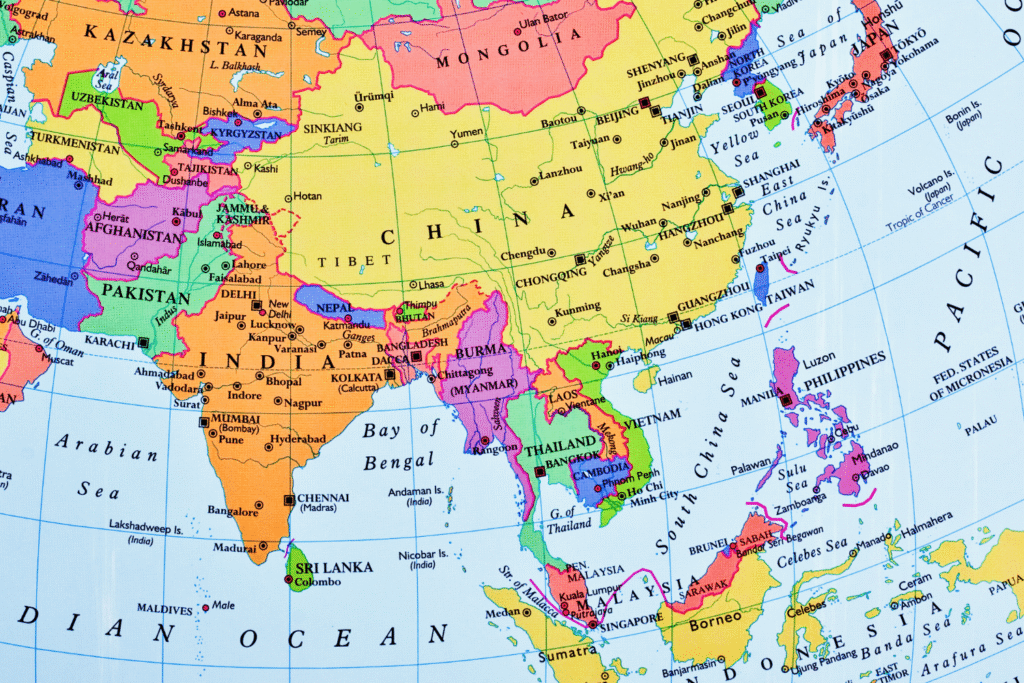The relative location of the Philippines is about its position in relation to other countries and the world’s natural resources.
We don’t talk about latitude and longitude here; those are topics discussed when we talk about its absolute location.
Latitude measures how far north or south a place is, while longitude how far east or west it is.
So, because it is in Southeast Asia, it is close to other Asian countries, and its people share many cultural connections with other Asians.
Filipinos value family, respect their elders, are close with their communities, work hard, and tend to put others first.
The Philippines Is Located in Southeast Asia
Historically, colonizers were drawn to the Philippines because it was a perfect stopover between the Pacific Ocean and the rest of Asia.
This is why, even though it was a small country that was not even powerful at the time, several countries tried to own it.
It was colonized by Spain, the United States, and briefly Japan during the Second World War. Currently, it is an independent country.
Member of the Association of Southeast Asian Nations
The Philippines is a founding member of the Association of Southeast Asian Nations (ASEAN), which was established in 1967.
Brunei, Cambodia, Indonesia, Laos, Malaysia, Myanmar, the Philippines, Singapore, Thailand, and Vietnam constitute ASEAN.
These countries cooperate to maintain peace and boost economic growth across the Southeast Asian region.
They engage in trade and collectively address global problems, such as climate change, disaster preparedness, and maritime security.

The Philippines Is Surrounded by Waters
The Philippines is made up of over 7,641 islands as of 2025, so water surrounds it in every direction, and it plays a huge role in its economy.
Even though it is prone to typhoons, tsunamis, and rising sea levels, it is rich in marine resources; fishing is a common livelihood.
North
Up north of the Philippines is Taiwan. The Bashi Channel separates them, which ships use to travel between the South China Sea and the Pacific Ocean.
West
To the west of the Philippines is the South China Sea, linking it to other Asian countries such as Vietnam, Malaysia, and China.
It is packed with marine life, especially the part that is now the West Philippine Sea; it won the arbitration case against China in 2016.
East
On the eastern side of the Philippines is the Pacific Ocean, so typhoons that form there usually hit the eastern part of the country first.
South
To the south, the Philippines is close to Malaysia and Indonesia, both Islamic countries, connected by the Celebes Sea and the Sulu Sea.
These seas brought Islam to the country even before the Spanish arrived.

The Philippines Is Prone to Earthquakes, Volcanic Eruptions, and Typhoons
The Philippines is disaster-prone because it is located along the Pacific Ring of Fire and within the Typhoon Belt.
Pacific Ring of Fire
The Pacific Ring of Fire is a horseshoe-shaped zone around the Pacific Ocean where many earthquakes and volcanic eruptions occur.
As of 2025, the Philippines has 24 active volcanoes. The most active is Mayon Volcano in Albay, famous for its nearly perfect cone shape.
Mayon Volcano has a perfect cone shape because repeated eruptions have symmetrically layered lava and ash over time.
Moreover, it also experiences an average of 20 to 30 earthquakes daily, although most are minor and only a few cause damage.
Typhoon Belt
The Philippines is hit by around 20 typhoons every year, being in the Typhoon Belt. Some bring flooding and property damage.
Provinces along the eastern side of the country are usually the first to experience landfall because it is near the Pacific Ocean.

The Philippines Has Been Important for Trade Due to Its Relative Location
During the pre-colonial period, traders from China and India came to Philippine ports to exchange silk, spices, and gold.
This happened because the country is in a perfect spot along sea routes connecting different parts of Asia.
It was part of a bigger trade network back then, which stretched across the Indian Ocean and the South China Sea.
You can even see the proof today. Archaeologists have found Chinese ceramics all over the Philippines, showing long ties with China.
Indian influence showed up, too, in early Filipino scripts written in Sanskrit and some Hindu and Buddhist practices.











